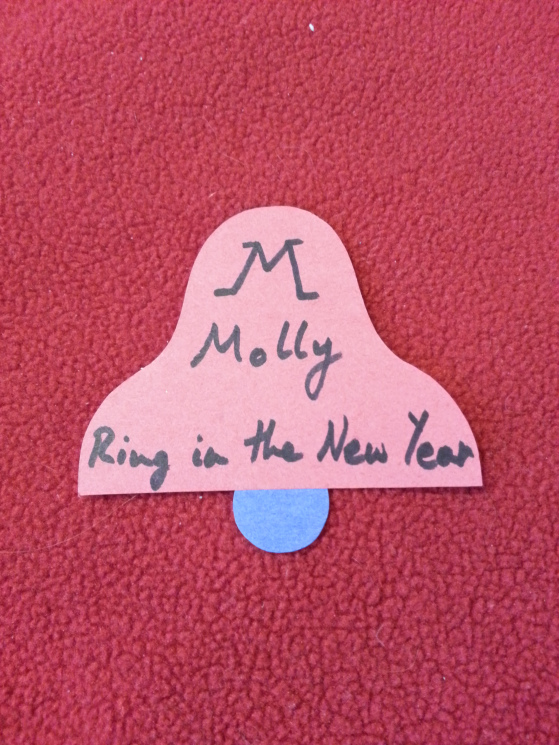Earlier this week I read an article by Alicia Hill, 7 Simple Steps That Will Make You Happier. I looked at the steps and thought to myself, “These can be adapted for us, chronic condition patients!” With an eighth step added, of course. You will see why when you get there!
I also watched “Pushing the Limits” on Insight SBS. As I listened to these extreme endurance athletes, I could see a link between what I and my fellow patients learnt in the Pain Management Program and what these athletes do to push through. Perhaps we need to look at ourselves as endurance QOLs – Quality of Life is the goal we strive for, not necessarily running 3,100 kilometres in 45 days! Our mental challenge can be just as extreme, even if our physical achievements are not.
The 8 Steps Step #1: Don’t Compare Yourself to OthersYou are unique. I am unique. Even if we have the same condition or combination of conditions, the conditions will not express themselves identically in each of us. On paper, we may have the same diagnosis, but in our day-to-day life we may have very different experiences.
Too often we compare ourselves to “normal” people. I’ve put normal on quotes because really – what is normal? We compare ourselves to those without medical conditions.
Comparing ourselves to others is not helpful.
As Alicia says, “THE ONLY PERSON YOU SHOULD BE COMPARING YOURSELF TO IS WHO YOU WERE YESTERDAY”. And trust me, if you could walk 5 minutes yesterday and today you can walk 5.5 minutes, you are making progress, WELL DONE!
Step #2: Don’t Talk Negatively About YourselfToo often we get down on ourselves. “I can’t even walk to the shops.” “I would, BUT…..”
Think about how you might achieve small objectives. “Right now I can’t walk to the shops. I can start pacing up. I can get started” is an acknowledgement that the shops is too far right this minute; it is also a commitment to take small steps to a goal. One goal that will improve quality of life. I offer some practical tips and ideas in Pacing for Beginners.
Step #3: Surround Yourself with People Who Make You BetterI think this is particularly important. We need our medical teams: endocrinologist, rheumatologist, gastroenterologist, dermatologist, general practitioner and many other medical people may be involved for any given patient.
We also need, as appropriate, physiotherapists, dietitians, Pilates instructors, masseurs, pain multi-disciplinary teams, hopefully you might need me to help you with your exercise.
Ensure you have good working relationships with your professionals – you will be much more inclined to stick to your medications or treatment programs if you have good relationships. If you see a doctor because he or she is recognised as the best in the field, but you can’t relate to that person, they may not be the best long term practitioner for you. Only you can make that decision.
Surround yourself with positive people as much as you can. People who understand your limitations, but will help you feel good about achieving each small step. There are many on-line support groups for medical conditions, most of which are fantastic. Be careful to avoid any where the tone is generally negative.
Yes, there are negative aspects to our conditions. If we dive into and dwell in the negativity it can become all-consuming and that will not help us achieve our quality of life goals.
Step #4: Do Something for Someone ElseThis makes us feel good, it makes us feel useful and relevant and alive. I remember one of my fellow patients was very keen to help her sister by minding her nephews/nieces. This was meaningful for her.
No, we may not now be able to do the things we once could for other people. No, I am NOT going to offer to mow my daughter’s massive lawns while she and her husband are overseas (sorry, daughter dear). I can collect the mail from their post office box though. I can mind my neighbour’s cat if she goes away.
Even smiling at someone can make their day. And yours!
Step #5: UnplugYes, well, something here I should do more of! We can become very tech-addicted when we feel our physicality is so limited. Be it TV, computers, iPad, mobile phones or a combination of all of the above, many may spend too much time consulting Dr Google, playing games to take our minds off our situation, or substituting real life social interaction with on-line interactions (often to save money).
Apart from the negative impact screens have on our sleep patterns, it all adds to our de-conditioning if we do it too much. De-conditioning further reduces our quality of life.
Unplug. De-screen. Get out and look for flowers.

“WHAT?”, you yell. “Gratitude? I can’t walk to the shops and I’m supposed to be GRATEFUL?”
Yes, you are. Earlier this month I visited a very dear friend of mine, Robin, who has a very lethal form of cancer. Next month he is having pelvic exenteration surgery. Robin is 56 years old and he and his wife, Moira, are deeply in love. Yes, I know – I’m Robyn and he is Robin – we call ourselves the male and female half of the same person. The surgery takes ten hours and he is an induced coma for a period of time afterwards. He will be in hospital for a month. He has already undergone six weeks of radiotherapy (five days a week) and chemotherapy (24/7). He will have another round of lengthy chemo after surgery. Heavy or lite chemo is yet to be determined.
 Robyn, Robin and Moira – Perth
Robyn, Robin and Moira – Perth
Am I practicing gratitude? Too damn right I am! Yes, my conditions may shave around five years off my live expectancy (provided I don’t get anything else), but I am not facing such radical surgery with an unpredictable post-surgery life expectancy (the stats are improving all the time), as Robin is. I am not losing my sexual function, or having to give up some of my favourite foods. I am not facing life with a colostomy bag and urinary diversion.
While there is no argument many chronic conditions can reach extremely debilitating and painful stages, there is much we can do to regain or maintain our quality of life if we start early, have the right treatment and support and are committed. Even if we start late, we can gain improvements. Robin doesn’t have that option. Without very radical surgery and intense chemotherapy his cancer is terminal.
I am grateful I am not the fibromyalgia patient I spoke to the other day whose skin is constantly on fire. I am grateful I am not the Victorian MP who resigned when her breast cancer returned and died the very next day.
I am grateful. Every day, I am grateful. I have been able to retrain for a new career, I am free of pain killers. I am grateful.
Step #7: Grow YourselfLearn as much as you can, from reputable sources, about your condition/(s). Learn how the conditions may interact if you have more than one. Quiz your medical team. Monitor your ups and downs as this will help your doctors help you.
Do not catastrophise. My doctor is still shaking her head because I wanted to pop out to have a thyroid biopsy in my lunch break. Well, they said it was a fine needle! How hard could it be? I have things to do! Perhaps I might have considered the risk of bleeding, but… *shrugs shoulders*. I’m not suggesting my approach is the most sensible, but neither is the other end of the spectrum, taking a week off in bed for something relatively minor.
The more we know and understand, the less we catastrophise and better equipped we are to manage our conditions on a day-to-day basis.
Step #8: MOVE MORE, EXERCISE, MOVEMENT IS MEDICINEI might have mentioned this before. If I have, no apologies for mentioning it again as it is important. David Tom MD, an Arizona-based chronic pain specialist, says patients who are successful in managing their conditions see movement as medicine. I love that phrase. Movement is the one of the best medicines we can use.
Most of the articles on this website relate to moving more, so I’ll close this item here rather than write another screed!
Being an Extreme QOLThe full episode can be viewed at SBS On Demand.
The extreme endurance athletes featured in that episode of Insight SBS all have something that drives them to beat the odds. As Leah Belson says, “There’s just one life, we’ve only got one”.
One man ran a considerable distance with a torn quad. That has to have been painful. The cyclist ends up with nerve damage in her hands.
Yes, these are very, very fit, healthy people. But they face challenges the average person on the street will never face, do things many will never attempt.
We are very similar: we face extreme pain, loss of function, brain fog, loss perhaps of social interaction and relationships or employment due to our conditions. We risk the loss of our quality of life. WE face challenges the average person on the street will (hopefully) never face.
We need to find within ourselves the “something” these athletes have that gets them through. That something may well be commitment. Remember that Pain Management Program I keep talking about? It is called PACT. The A stands for acceptance and the C stands for commitment.
My friend Robin has accepted his situation and is committed to his treatment. He will get through this because he wants to continue his life with Moira. He also wants get back on that bike! Speaking of that photo, he gave me the jacket because he thought I’d feel safer. I thought he was “making” me wear it. Anyone smell a lack of communication there?





